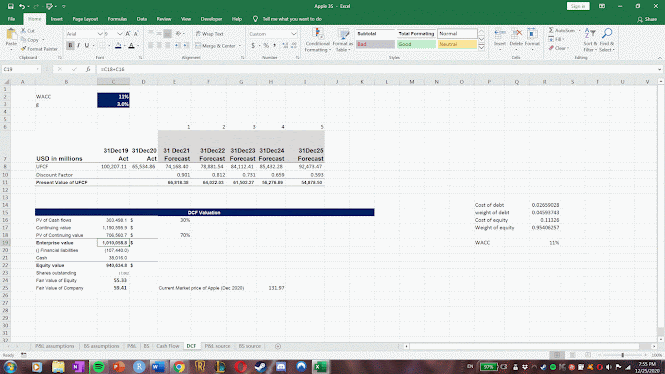The most difficult part of this valuation was calculating the WACC. WACC equals Cost of debt * Weight of debt ( debt / debt + equity) * (1- effective tax rate) + Cost of equity* Weight of equity. Cost of debt is defined as the interest expenses of that year divided by total debt of that year.
Cost of equity is defined using the Capital asset pricing model CAPM), where CAPM = risk free-rate + company's beta(expected market risk - risk free rate). Using values from the 10-K and the yahoo! finance page of Apple, I came up with an estimated value of 11%.
To calculate the Discount factor, you have to divide 1 by 1+WACC to the power of the corresponding future year (in my model 2021 equals year 1). The terminal value/ continuing value is calculated with the following formula: Last FCF value * (1+ perpetual growth rate)/(WACC- perpetual growth rate). The Enterprise value is the sum of the PV of Cash flows & the PV of the Continuing value. Following the few remaining steps, I ended up with a Fair value of equity of around $55, which stands in strong contrast too Apple's current stock price of $131.97. Even though, I felt like I have followed the right steps, there is a good possibility have done something wrong along the way of my calculations. I will continue my research by looking at other examples of Apple DCFs in order to see what went wrong.


Comments
Post a Comment